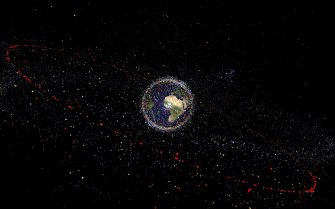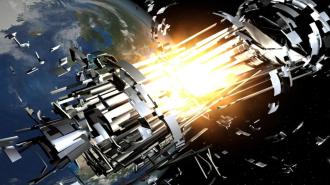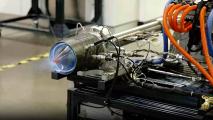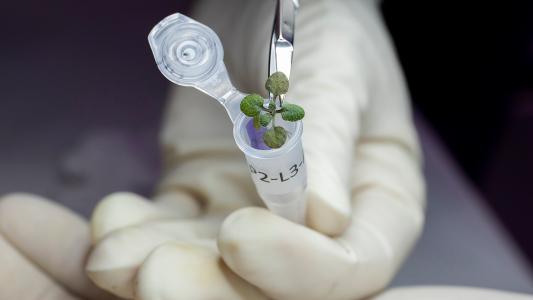Exploring space is one of humanity’s most hopeful activities. By going out into the great unknown of the Universe, we hope to extend our reach, find new resources and life forms, while solving many of our earthly problems. But going to space is not something to take for granted—it can actually become impossible. There is a scenario, called the Kessler Syndrome, that can cause the end of all space exploration and dramatically impact our daily lives.
In 1978, the NASA scientist Donald J. Kessler proposed that a chain reaction of exploding space debris can end up making space activities and the use of satellites impossible for generations. He predicted that the number of objects that we keep launching into Low Earth Orbit (LEO) can create such a dense environment above the planet that inevitable collisions could cause a cascading effect. The space junk and shrapnel generated by one collision could make further collisions much more possible. And if you have enough collisions, the amount of space debris could overwhelm the orbital space entirely.
What makes that situation possible is the fact that there are millions of micrometeoroids as well as man-made debris that is already orbiting Earth. The danger posed by even a small fragment that’s traveling at high speeds is easy to see. As calculated by NASA, a 1-centimeter “paint fleck” traveling at 10km/s (22,000 mph) can cause the same damage as a 550-pound object traveling 60 miles per hour on Earth. If the size of the shard was increased to 10 centimeters, such a projectile would have the force of 7 kilograms of TNT. Now imagine thousands of such objects flying around at breakneck speeds and crashing into each other.

Distribution of debris around Earth. (Credit: ESA)
If a chain reaction of exploding space junk did occur, filling the orbital area with such dangerous debris, the space program would indeed be in jeopardy. Travel that goes beyond the LEO, like the planned mission to Mars, would be made more challenging but still conceivably possible.
What would, of course, be affected if the Kessler Syndrome’s worst predictions came to pass, are all the services that rely on satellites. Core aspects of our modern life—GPS, television, military and scientific research—all of that would be under threat.
NASA experienced a small-scale Kessler Syndrome incident in the 1970s when Delta rockets that were left in orbit started to explode into shrapnel clouds. This inspired Kessler, an astrophysicist, to show that there is a point when the amount of debris in an orbit gets to critical mass. At that point, the collision cascading would start even if no more things are launched into space. And once the chain of explosions begins, it can keep going until the orbital space can no longer be used.
In Kessler’s estimate, it would take 30 to 40 years to get to such a threshold. NASA says that its experts caution that we are already at critical mass in the low-Earth orbit, which is about 560-620 miles (900 to 1,000 kilometers) out.
According to NASA estimates, the Earth’s orbit currently has 500,000 pieces of space debris up to 10cm long, over 21,000 pieces of debris longer than 10cm, and more than 100 million pieces of space debris smaller than 1cm.
A 2009 incident dubbed the Cosmos-Iridium collisionfeatured a space collision between Russian and American communication satellites that provided a preview of potential attractions in the massive debris field it created. The accident resulted in more than 2,000 pieces of relatively large space junk.
While there are some safety measures being taken, like the Space Surveillance Networkrun by the military, the sheer amount of stuff already floating in space makes the domino effect of explosions a likely possibility.
Check out this video about the Kessler Syndrome that features Don Kessler himself. And here’s Kessler’s original paper on the subject, titled ‘Collision Frequency of Artificial Satellites: The Creation of a Debris Belt‘.
This article was reprinted with permission of Big Think, where it was originally published.


